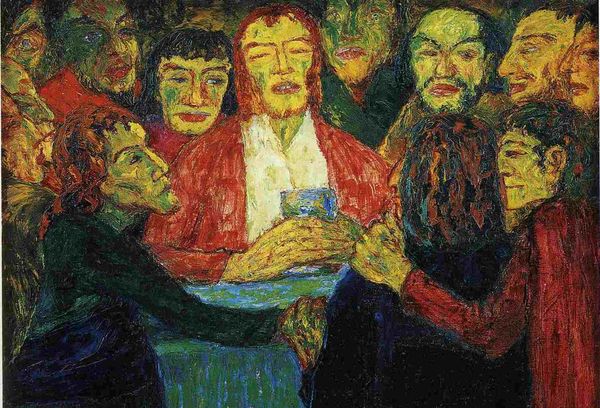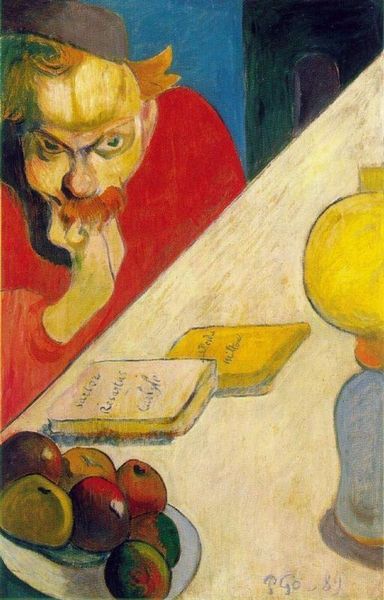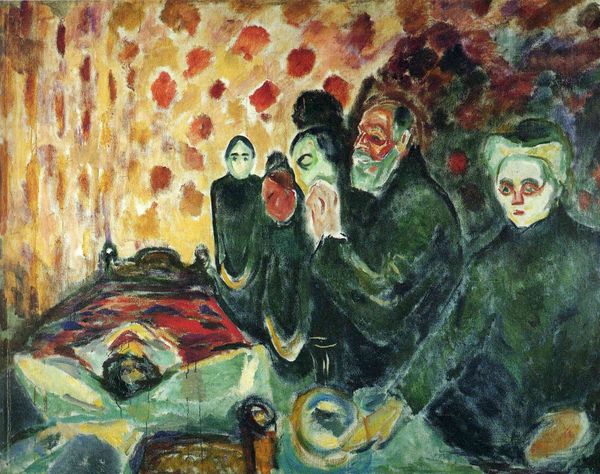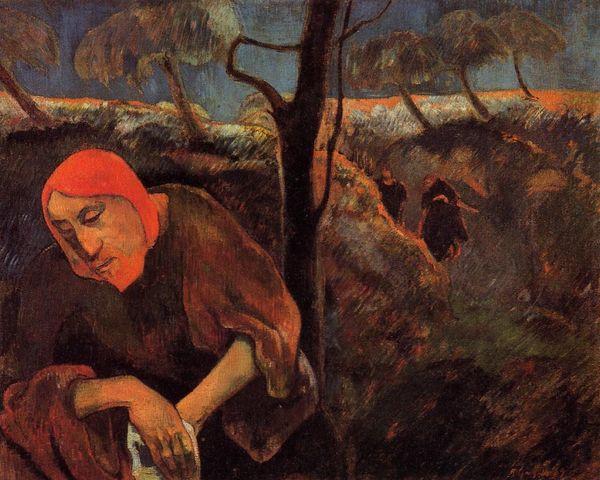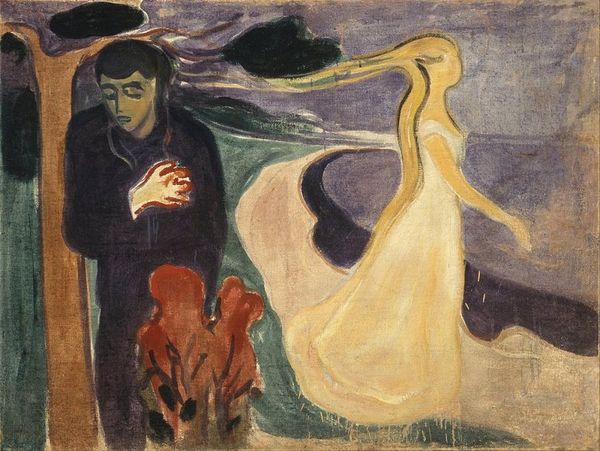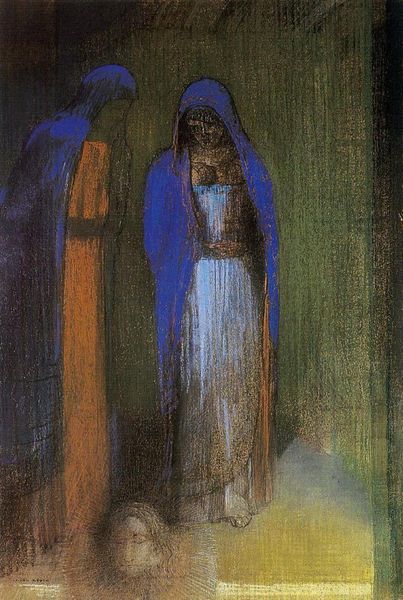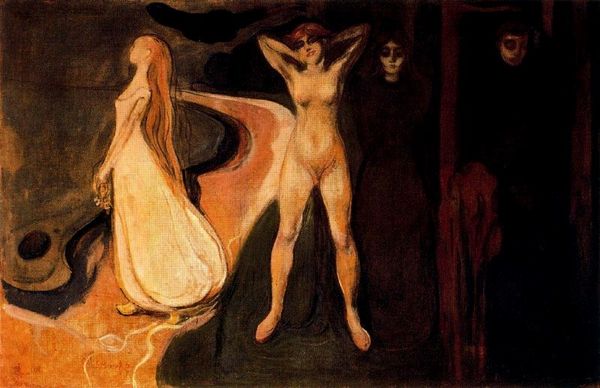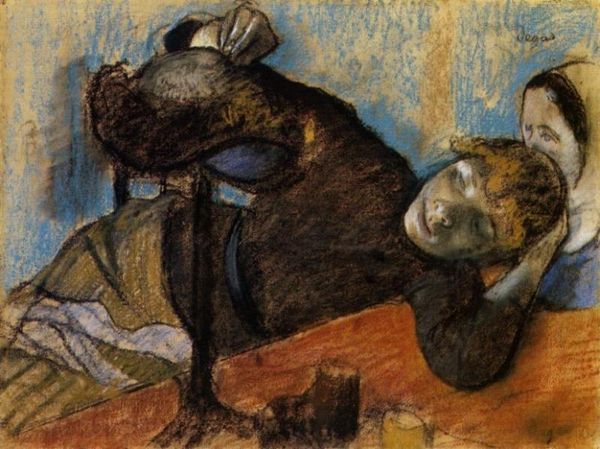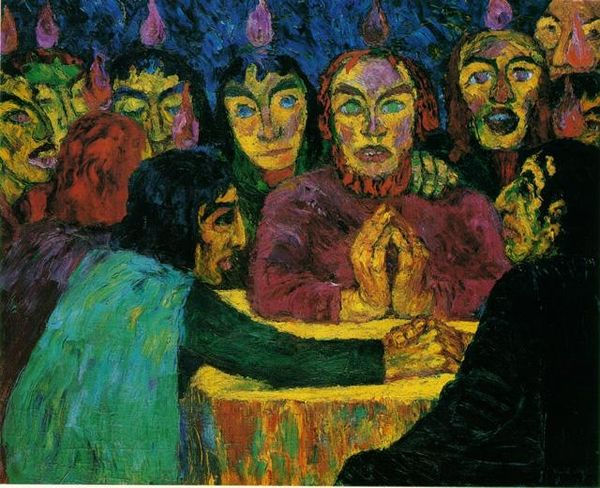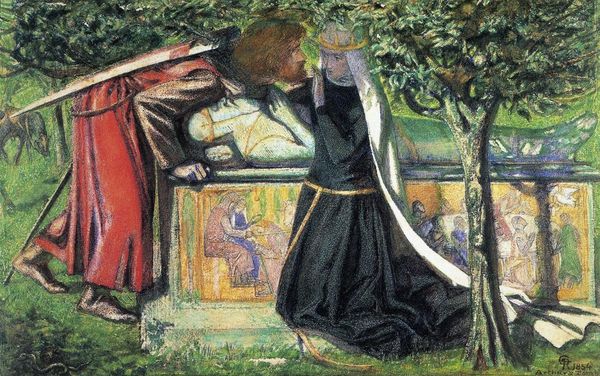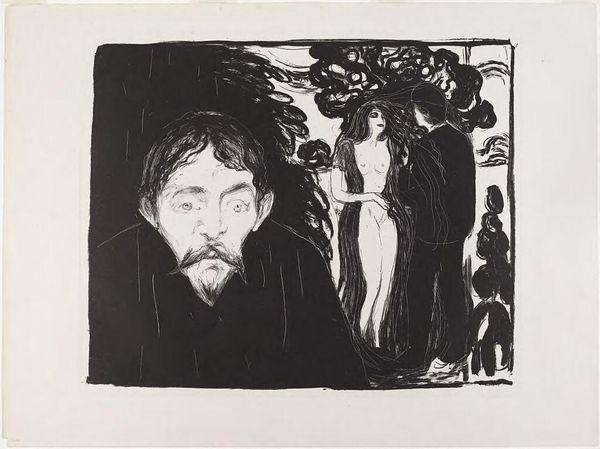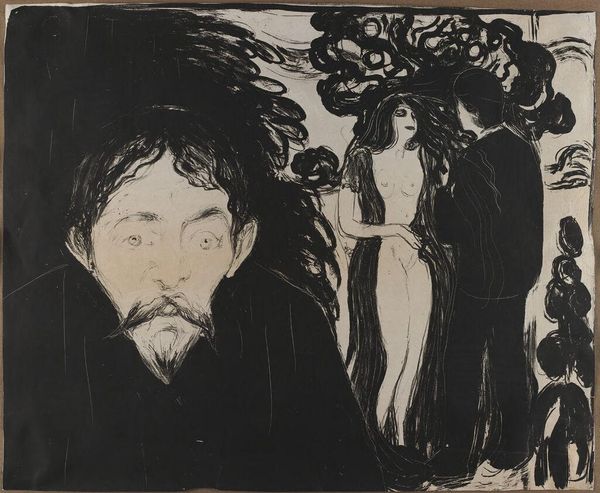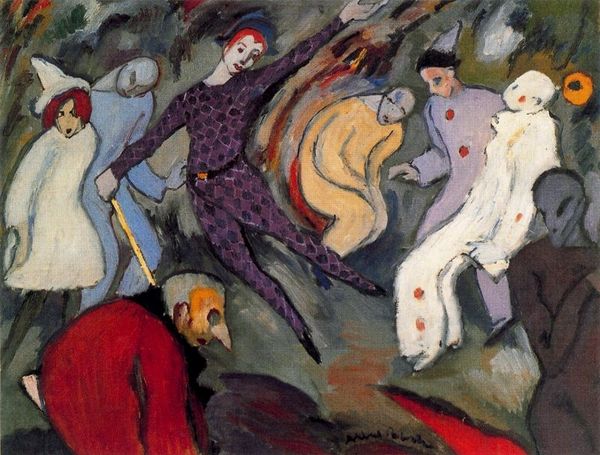
painting, oil-paint
#
portrait
#
painting
#
oil-paint
#
oil painting
#
symbolism
#
post-impressionism
#
nude
#
portrait art
Dimensions: 67 x 100 cm
Copyright: Public domain
Curator: Munch’s "Jealousy," painted in 1895 using oil paints, leaps off the canvas with a raw, unsettling energy. I find it quite overwhelming at first glance. What catches your eye? Editor: That looming face on the right—it’s just dripping with suspicion, isn’t it? It dominates the composition. You almost feel guilty just looking at the other figures. Curator: Precisely! Munch masterfully uses portrait art to communicate the turmoil within the jealous figure. See how the lovers in the background stand beneath the Tree of Knowledge? It echoes the Fall, doesn’t it? The nude woman has a scarlet hue, as though guilt were painted directly onto her skin. Editor: Oh, definitely. And that intense redness. It saturates the painting like a fever. Is that an actual apple, a temptation from the iconic tree of paradise or the woman extending it in desire? In terms of cultural memory, of course, it ties in the symbolic weight of original sin. Curator: It certainly intensifies that idea, giving the image an unsettling ambiguity. This wasn’t the first time Munch painted on the themes of envy. It seems almost cyclical within his work. In contrast, think of the very dark figures almost dissolving in the background. It also helps to focus our attention on the face. Editor: Right. That deliberate blurring is key. It feels almost primal, this raw exposure of raw human emotion. It's about archetypes, not specific individuals or their likeness. But beyond the biblical symbols and primal expressions, I wonder about Munch’s intention of painting it in that period—the symbolist art movement with its emotional interpretation and exploration of irrational subjects. Curator: He truly encapsulates the intensity of post-impressionism. It’s like an unleashing of inner experience directly onto the canvas. Munch doesn't simply paint jealousy; he embodies it, giving it form and color. And like with Van Gogh or Toulouse Lautrec, he’s making us feel uncomfortable in a fascinating way. Editor: I’d say this disquiet is the painting’s real strength. "Jealousy" serves as a kind of brutal, honest mirror to the human condition. The mirror is fractured but still shows truth in it. Curator: Agreed. The starkness truly stays with you and keeps giving even long after the initial shock subsides.
Comments
No comments
Be the first to comment and join the conversation on the ultimate creative platform.
